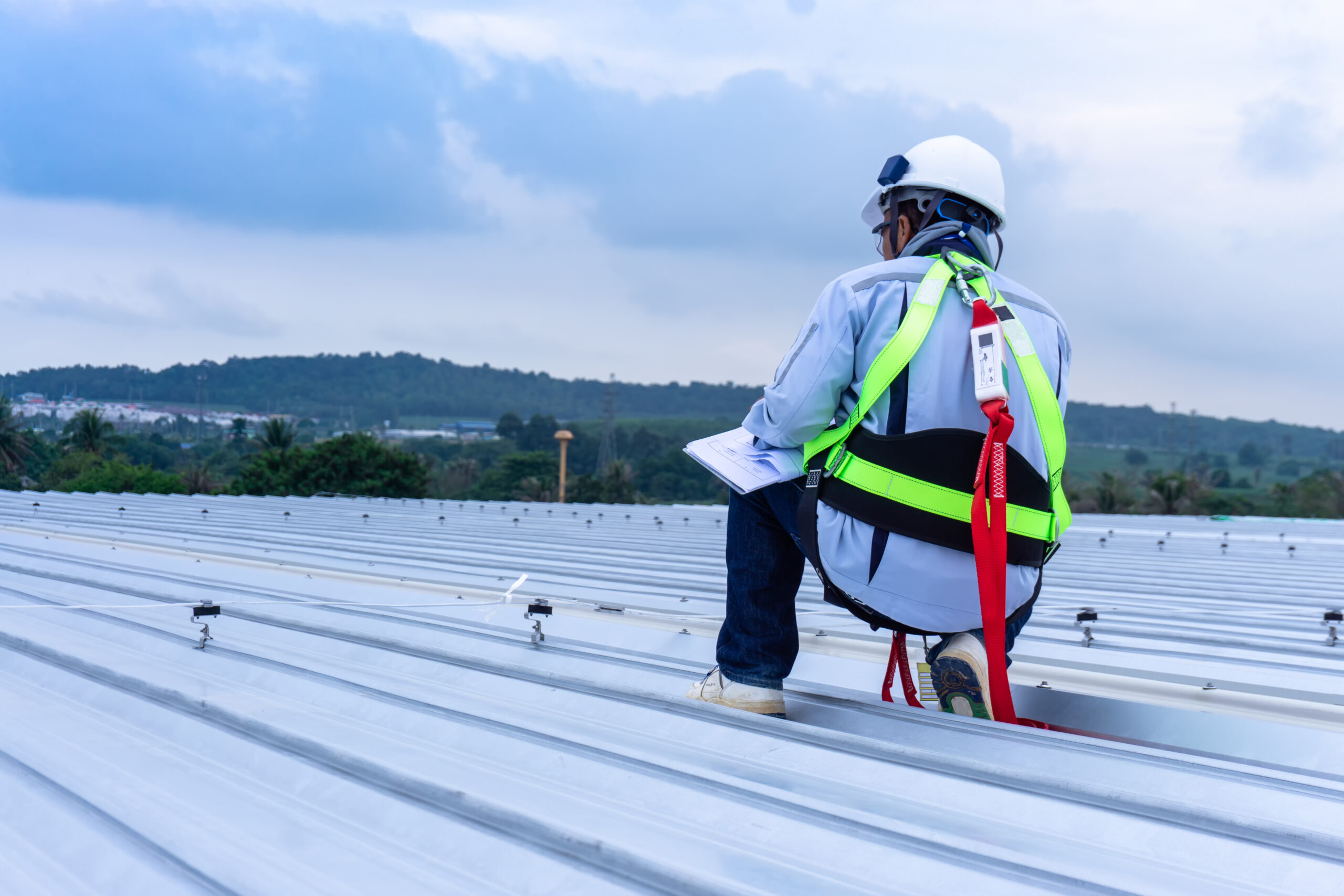
05 Apr Sanford Homeowners: Print This Essential Roofing Terminology Guide
Residential Roofing Glossary: A Sanford
Area Homeowner’s Guide
Central Florida Roofing
Terms Made Simple
When you’re researching residential roofing in Sanford, understanding the terminology helps you make informed decisions about your home.
This simple guide breaks down common roofing terms you might hear during consultations, inspections, or repair discussions.
Keep this handy reference guide for your next conversation with your roofing contractor or when planning your next roof project.
Residential Roofing Structure Components
Decking/Sheathing: The wooden boards that form the foundation of your roof, attached directly to the roof rafters.
Rafters: The structural components that support the roof deck and roofing materials.
Trusses: Pre-fabricated, engineered wood structures used instead of conventional rafters in many newer homes.
Ridge: The highest point of your roof where two sloping roof planes meet.
Valley: The internal angle formed by the intersection of two sloping roof planes.
Eave: The lower edge of the roof that overhangs the wall, typically where gutters are installed.
Fascia: The vertical finishing edge connected to the ends of rafters, trusses, or where the gutter is attached.
Soffit: The underside of the eave, connecting the roof overhang to the side of your home.
Residential Roofing Materials
Asphalt Shingles: The most common residential roofing material, made from fiberglass mat coated with asphalt and ceramic granules.
Architectural Shingles: Premium asphalt shingles with added thickness and dimensional appearance, also called dimensional or laminate shingles.
Metal Roofing: Durable roofing made from various metals including aluminum, steel, or copper, popular in Central Florida for hurricane resistance.
Tile Roofing: Clay or concrete tiles that provide distinctive appearance and excellent durability in Sanford’s climate.
Spanish Tile: S-shaped tiles that create a rippled effect, common in Florida’s Mediterranean and Spanish-style homes.
Modified Bitumen: A type of roofing material commonly used on flat or low-slope roofs.
TPO: Thermoplastic Polyolefin, a single-ply roofing membrane used for flat roofs.
Residential Roofing Installation Components
Underlayment: Water-resistant barrier installed between the roof deck and roofing material.
Felt: Traditional asphalt-saturated underlayment, sometimes called tar paper.
Synthetic Underlayment: Advanced water-resistant material that performs better than traditional felt.
Ice and Water Shield: A waterproof membrane used in valleys and other vulnerable areas to prevent water infiltration.
Flashing: Metal pieces installed at roof joints, around chimneys, and other areas to prevent water intrusion.
Drip Edge: Metal strips installed along roof edges to direct water away from the fascia and into the gutters.
Starter Shingles: Special shingles installed at the eave before regular shingles to provide proper water shedding.
Ridge Vent: Ventilation system installed at the peak of the roof to allow hot air to escape the attic.
Ridge Cap: Special shingles that cover the ridge for a finished appearance and weather protection.
Residential Roofing Measurements & Design
Pitch: The steepness of your roof, expressed as a ratio (like 4:12).
Slope: Another way to express roof steepness, sometimes shown as a percentage.
Square: Roofing measurement equal to 100 square feet.
Hip Roof: A roof with slopes on all four sides that meet at the top to form a ridge.
Gable Roof: A roof with two slopes that meet at a central ridge, with triangular wall sections at each end.
Mansard Roof: A four-sided roof with a double slope on each side, with the lower slope steeper than the upper slope.
Common Residential Roofing Problems
Ice Dam: Ridge of ice that forms at the roof edge, preventing proper drainage.
Ponding: Standing water on a flat roof for more than 48 hours.
Blistering: Bubbles in roofing materials caused by moisture or inadequate ventilation.
Buckling: Distortion of shingles, often appearing as a wave or ripple.
Granule Loss: When the protective granules on asphalt shingles wear away over time.
Flashing Leaks: Water intrusion around roof penetrations due to damaged or improperly installed flashing.
Residential Roofing Repair & Maintenance
Roof Inspection: Professional evaluation of roof condition to identify problems or potential issues.
Patching: Repair of a small, damaged area of roofing.
Tear-Off: Complete removal of old roofing materials before new installation.
Overlay: Installing new shingles over existing ones (not always recommended).
Roof Coating: Protective layer applied to extend roof life and improve energy efficiency.
Roof Ventilation: Systems that allow air to flow through the attic space, reducing heat and moisture buildup.
Understanding Your Residential Roofing Warranty
Manufacturer Warranty: Covers defects in the roofing materials themselves.
Workmanship Warranty: Covers problems related to the installation of your roof.
Prorated Warranty: Coverage that decreases over time as your roof ages.
Non-Prorated Warranty: Full coverage that doesn’t decrease based on roof age.
Transferable Warranty: Coverage that can be passed to a new homeowner if you sell your house.
For a free roof inspection or to discuss your roofing needs with our experienced team, contact Universal Roof & Contracting at 407-214-4872 today.



